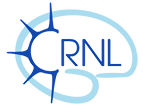Juan Alvaro Gallego, Lecturer, Faculty of Engineering, Department of Bioengineering, Imperial College London.
David Thura (IMPACT CRNL)

When repeatedly exposed to a predictable perturbation, animals including humans progressively learn to use their perceived errors to anticipate its effect. This behavioural adaptation starts even during the very first trial after perturbation onset, and is mediated by complex interactions across a variety of sensorimotor brain regions that remain to be fully understood.
In this talk, I will present our experimental, computational, and theoretical work to understand the neural basis of rapid motor learning, or “motor adaptation”. I will begin by discussing our analysis of neural population recordings from monkey premotor and motor cortex during two classic laboratory paradigms to study motor adaptation: force field adaptation, and adaptation to a visuomotor rotation. I will show that in both cases, our data suggests there is no significant synaptic plasticity in the motor cortices. What then drives motor adaptation? By adopting a “neural manifold” view, we found that force field adaptation is associated with the formation of an updated motor plan in the premotor cortex, whereas adaptation to a visuomotor rotation happens upstream of the motor cortices. This result was supported by comparing our neural population recordings to a series of modular recurrent neural network models, although these simulations also raised the intriguing possibility that current adaptation paradigms may be driven by small, correlated connectivity changes in motor cortical circuitry.
Finally, I will discuss some of our theoretical work to understand the implementation of rapid motor learning in brain circuitry. I will show that a recurrent neural network that performs feedback control can use the same “error signal” to learn to adapt its output, readily reproducing observations from key visuomotor adaptation studies in humans. Moreover, the same network activity changes during learning can be identified in our neural population recordings from monkey motor cortex. Thus, feedback-based motor control and rapid motor learning may be unified in their implementation by motor cortical circuits.
In summary, adaptation to different types of apparently similar motor perturbations —a force field or a visuomotor rotation— is associated with different implementations in neural circuitry. Yet, regardless of the perturbation type, synaptic connections within the motor cortices may remain fixed throughout learning. Feedback may be the key element not only to correct our ongoing movements, but also to learn to anticipate predictable perturbations.
CRNL - CH Le Vinatier - Bâtiment 462 Neurocampus Michel Jouvet - Amphithéâtre Neurocampus, 95 Boulevard Pinel, Bron











